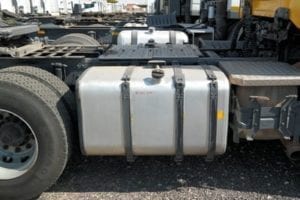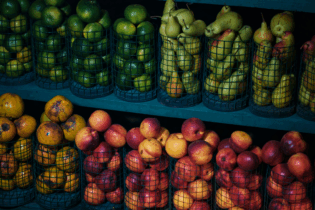For companies operating large fleets in Africa, budgeting for fuel has become increasingly difficult as rapidly changing oil prices and currency fluctuations play their part.
Although Nigeria is the largest oil producer in Africa, lack of maintenance means that the country produces well below its capacity, and in fact, has to import fuel for own consumption. The market fuel price is regulated in a dual pricing mechanism for petroleum products: while the petrol price is regulated from time to time by the government, diesel pricing seems to be deregulated with marketers free to charge prices as they wish. Petrol prices are heavily subsidised by the Government as it seeks to stabilise the domestic price and guarantee effective product availability and nationwide distribution. This has played an increasingly important role as the Nigerian Naira has weakened significantly against the US dollar. “Given the current situation, and taking into account the Brent Crude Oil predictions and currency exchange factors, we anticipate that the Nigerian fuel price will increase between 0 – 3% until December 2015. Therefore, we recommend that an annual inflation of at least 3% is budgeted for fuel in 2015. However, government intervention on the petrol price determination and the uncontrolled diesel market price makes this figure unpredictable,” said Murray Price, managing director of Eqstra Fleet Management. Zambia’s economy is booming with a predicted GDP of over 6% for the next three years. Fuel consumption is approximately 42 million litres per month and is expected to increase by approximately 40% per annum. However the country’s only refinery, Indeni, runs at 50% capacity due to maintenance issues. Once the upgrades of the refinery and the Tazama pipeline are completed, refined oil imports will drop significantly. The Energy Regulation Board (ERB) regulates fuel prices, according to crude oil prices on the International market. Other factors which are taken into account include importation costs, fuel tax etc. The Zambian Kwacha has remained remarkably steady against the US dollar and the currency exchange rate, therefore, has minimal impact on the fuel price. It is therefore advised that operator’s budget for a 5% increase in petrol and 7% increase in diesel for the forthcoming year. Botswana also has an expected GDP of 6% per annum and it is expected that the current fuel demand for both petrol and diesel products will increase by 44% by the end of 2025. Botswana does not have any petrol reserves on its soil and has to import all petroleum demand in refined form from South Africa. However, the Botswana pula is stronger than the South African Rand which allows it to contain prices. Despite this, both petrol and fuel are heavily subsidised by the Botswana Government and the price of fuel in Botswana is significantly lower than in South Africa.“We would suggest operators should budget for a price increase of 6% in the forthcoming year,” said Price.
Although oil reserves have been discovered in Namibia, there has been no production to date and Namibia is still entirely dependent on South Africa for all its fuel requirements. The Namibian dollar is on a par with the South African Rand. The Ministry of Mines and Energy coordinates the operation of the oil industry. It regulates fuel price stability through monitoring and monthly setting of petroleum prices while at the same time ensuring that the oil industry remains profitable and sustainable. A price build up is based on assumed landed cost. Landed cost refers to the total cost of the shipped product, which includes the purchase price, freight, insurance and any other costs up to the port destination. Although the retail price of all petrol grades is gazetted at each price adjustment, diesel prices are controlled only at the wholesale level. The government plays no active part in the supply and distribution of petroleum products other than to control prices to ensure an optimum operating level for its commercial and private sectors. The company suggests a budget increase of 6% is adopted by Namibian fleet operators. Lesotho and Swaziland have seen an average increase in their respective fuel prices, year on year, of 8%. Both countries import all their fuel from neighbouring South Africa and their currencies run on a par with the South African Rand. Fuel prices in both Swaziland and Lesotho are heavily subsidised by the Government and, therefore, have historically been much lower than prices in South Africa. Due to the close relationship with South Africa, and in line with predictions of an 8% price rise in fuel prices in South Africa, the company suggests a budget increase of 8% in the price of fuel for fleet managers operating in Swaziland and Lesotho. “Reducing overall fleet costs has become the major challenge facing fleet managers, and this has come at a time when fuel prices have risen by an average of 13% per annum over the past 10 years,” concluded Price. “Setting accurate fuel budgets allows operators to effectively control and manage their fleet costs which can today significantly impact on a company’s operational budget.”







